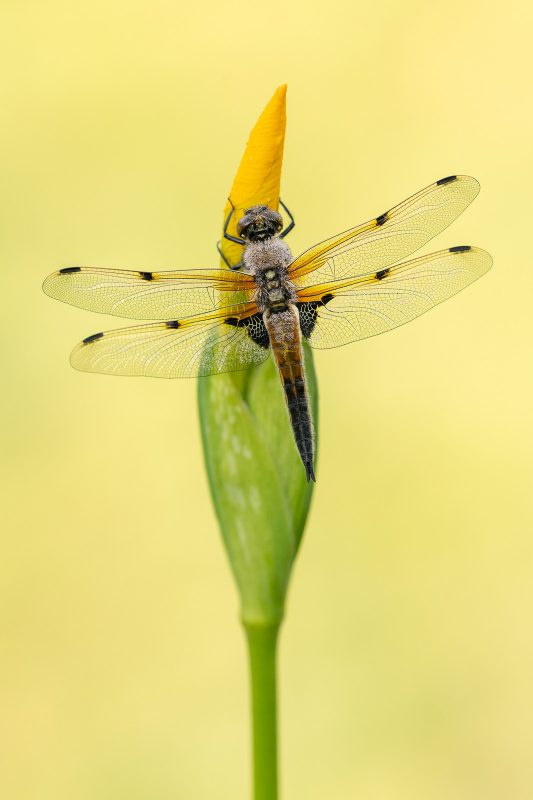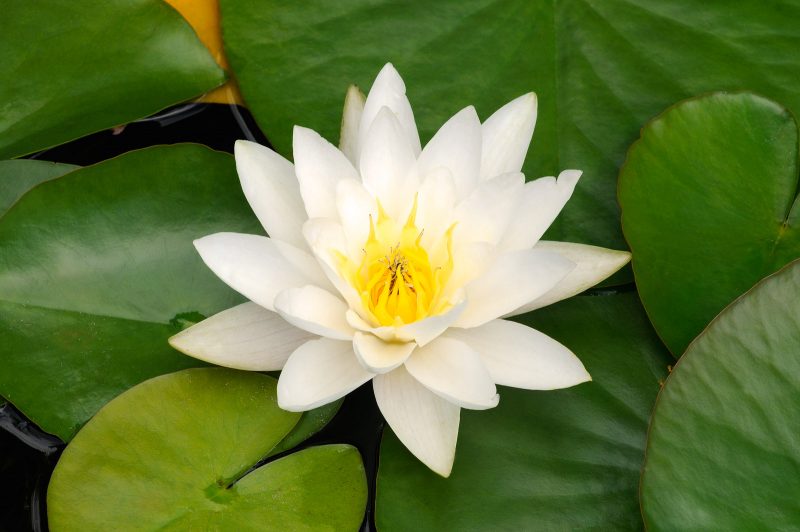How to Photograph Pond Life

I must have been just 9 or 10 years old when I helped to create my very first wildlife pond. My dad and I cleared turf, dug, and shaped our pond for days. We carefully removed any sharp stones from the bottom and created a protective underlay using old carpets and sand. We then lined our pond using a heavy-duty membrane and waited for the rain! Later, we introduced some native aquatic plants, a few pond snails, and also a clump or two of frog spawn ‘borrowed’ from a neighbour’s pond. Having done our bit, we then sat back and watched as nature did its thing.
Within the first year, we had 4 or 5 different species of damselfly and 3 types of dragonfly. Newts, toads, diving beetles, water boatmen, pond skaters and whirligigs were among the first creatures to make our pond their home. Within a few short months, the pond was an established little ecosystem brimming with life.


30-years on, ponds continue to give me a huge amount of pleasure. A small pond or water feature will bring any garden – big or small – alive. Not only does a pond provide an essential habitat, refuge, drinking water and somewhere to bathe for a vast number of animals, but it will also give you endless photo opportunities.
At the time of writing this, the world is in a state of lockdown. But whether you are confined to home or not, you have the potential to create a rich habitat for nature in your very own backyard, while also enticing nature close to your camera. A wetland habitat is one of the very best environments for finding and photographing wildlife. Ponds in particular attract a multitude of small animals, including amphibians and colourful flying insects, and during spring and summer they are a hive of activity.
Fresh water will always attract wildlife, so it is an obvious habitat for nature photographers to create or visit. If you don’t have the space to construct a pond – or have young children, and are concerned about the risk of having deep water within your garden – you are unlikely to have to venture far to find a park or heath home to a pond or small lake where you can visit regularly with your camera. So, what are you likely to find? If you are lucky, you might spot a water vole, a grass snake swimming, a raft spider, or newt popping up for air.
While under the water’s surface, there is an entire World of miniature critters. However, realistically, you are only likely to get a fleeting glimpse of such things. To capture good images of small aquatic invertebrates, like diving beetles, tadpoles and larvae, requires the use of an aquarium set-up and – speaking personally – I’m not a fan of removing subjects from their environment.
Instead, you are better to target widespread and obvious wetland subjects, such as dragonflies, damselflies, frogs and aquatic plants.
Frogs and toads
Frogs are particularly photogenic. They are easiest to locate when spawning during late winter and early spring. With so many individuals in the water at one time, you can simply kneel by the water’s edge – camera at the ready – and wait for one to pop its head above the water’s surface.
At other times of the year, you are more likely to find frogs and toads among damp vegetation in gardens or sheltering among rocks or flowerpots on your patio. A low, eye-level viewpoint will often work best, so be prepared to lie prone on the ground – wear waterproof clothing to keep yourself dry and comfortable.
Read more: How to Photograph Frogs and Toads in Water
Amphibians are typically timid creatures, so avoid getting too close. A telephoto or tele-zoom is a good option – using one will provide a larger working distance than a macro lens or close-up attachment.
As they often prefer dark, damp places, light can be in short supply. Natural light is normally preferable, but you may need to increase ISO speed. Flash is a good option as it will also provide a nice catchlight in the subject’s eyes. However, diffuse the flash heavily to avoid ugly hotspots forming on the amphibian’s shiny skin. Also, don’t overlook the picture potential of spawn, which can create intriguing and abstract patterns in close-up.
Dragonflies and damselflies
Dragonflies and damselflies are among the most popular and easily accessible wetland subjects, and during the summer months these colourful flying insects will be patrolling pools, ponds and reservoirs. They are busiest and easiest to see during the warmth of the day, when they will be hunting and mating.
Some species of dragonfly, like four-spotted chasers, are fiercely territorial, and will return to the same perch again and again – typically reeds or branches overhanging the water’s edge. Take time to observe their behavior. Once you have identified their favourite spots, wait close-by – camera at the ready – and when they next settle move into a picture taking position. A macro lens is normally the best choice, while an overhead or side-angle will often suit the subject best. Patience and perseverance are key to success
When taking photos during the day, you will almost certainly have to shoot handheld but, presuming it is light and sunny, shutter speeds should be adequately fast to freeze camera or subject motion. Dragonflies and damselflies are highly sensitive to any movement, so always keep your actions slow and deliberate – it is essential to avoid any sudden movements.
While you have no control over background choice when stalking insects, you can throw backdrops pleasantly out of focus by using a large aperture – such as f/4 or f/5.6. Or, if your subject is very tolerant, consider using a wider focal length and smaller aperture to capture close-ups with a greater sense of context, with your subject obviously within its wetland/pond environment.
Early morning can be a particularly good time to look for damselflies. Typically, they begin flying at temperatures of around 13-15 degrees Celsius, so they are inactive just after sunrise when it is still cool. After clear, still nights, you may find their bodies and wings are smothered in dew, adding interest, scale and sparkle to insect close-ups.
Look for insects clinging to reeds, tall grasses and low branches close to the pond’s edge. Look for subjects roosting in a position suited to photography – somewhere you can place distance between it and its background, and without too much surrounding vegetation.
Overnighting insects will normally allow you to set-up a tripod close-by and use a reflector or LED device (if necessary) to enhance the light. As with any subject, the light’s direction is a key consideration. Dragonflies and damselflies have transparent, intricate wings, while their bodies are slightly translucent, so backlighting in particular will highlight their shape and design.
When the situation allows, try to capture an element of subject behaviour like mating, flight, or one emerging from its larval case. Doing so will help your images to be more interesting and memorable.
When damselflies pair they create a ‘wheel’ or ‘heart’ shape, which is very photogenic. However, to capture two insects in sharp focus simultaneously is technically demanding. The key is to position your camera parallel to the mating pair so that they both fall within the lens’ plane of sharpest focus. Give yourself room to maneuver by using a smaller aperture, in the region of f/11, and take a series of shots to maximise your chances of success.
In spring, it is worthwhile scanning reeds and grasses close to the water’s edge for newly emerged insects that have recently moulted, or are in the process of hatching. Watching an insect emerge from its exoskeleton is fascinating and very photogenic. Most emerge in the morning, although some larger dragonflies hatch overnight.
Read more: How to Photograph Dragonfly Emergence
Other subjects
While amphibians and aquatic insects might be the most obvious pondlife subjects, you will likely find other interesting creatures hiding away among the vegetation around the water’s edge.
When I scan the grasses and reeds skirting my ponds, I’ll regularly spot little spiders, snails, dock and shield bugs, caterpillars, and lacewings.

There has never been a better time to create a wildlife pond and photograph pond life. Not only will you be doing your bit for nature, but the picture potential is endless.


















